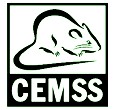 |
Controlled Ecological |
 Abstract: How best to effectively demonstrate basic Advanced Life Support Systems in a small, remote location or educational setting? Requirements of space, mass, and logistical factors for many remote research facilities severely limit any sort of full-sized human CELSS/ALS setup. Likewise, building such a full-sized system for educational use would be quite spendy. Nevertheless, the need for such a system for analog testing use is essential for future Martian endeavors. Abstract: How best to effectively demonstrate basic Advanced Life Support Systems in a small, remote location or educational setting? Requirements of space, mass, and logistical factors for many remote research facilities severely limit any sort of full-sized human CELSS/ALS setup. Likewise, building such a full-sized system for educational use would be quite spendy. Nevertheless, the need for such a system for analog testing use is essential for future Martian endeavors.Enter the CEMSS Module. This is a self-contained experimental package, designed to demonstrate many of the basic functions of a full-sized system, but with a fraction of the mass and no ecological impact. Likewise, it will provide a unique educational opportunity to observe the basic workings of a bio-regenerative system. The CEMSS Module will be composed of two main elements: a "mini-greenhouse" Plant Growth Chamber and a Mouse Habitat. Assuming a short-duration run (1 to 2 weeks), the plants would be germinated in advance, so that the vegetable matter will be up and growing when the mice are introduced. The mice, likewise, will be pre-adapted in the Rodent Hab prior to arrival. Both chambers will be linked to one another via a series of fittings, vents, and fans to allow for the CO2/Oxygen exchange cycle, as well as a water recycling system. Otherwise, it will be sealed for the duration. An air and water sampling mechanism will be included in the structure to allow for daily samples for later testing, as well as real-time data acquisition of other variables.  Mouse droppings and urine will be flushed out, ground up, and mixed in solution, which will be recycled back into the planting material, an inert substrate hydroponics unit. The water then is sanitized and filtered back for use by the mouse, as needed. Food for the mouse will consist primarily of the growing plant material as well as supplemental vitamins. Both chambers will have a range of sensors to monitor variables such as CO2/O2 levels, temperature, humidity, pH levels, etc. Power for the system to run the pumps, sensors, and other electrical items will be provided by solar cells, available off-the-shelf from numerous local suppliers. The batteries will be several deep-cycle marine-rated sealed lead acid 12 volt type, or if the budget allows, rechargable gel-cells. Mouse droppings and urine will be flushed out, ground up, and mixed in solution, which will be recycled back into the planting material, an inert substrate hydroponics unit. The water then is sanitized and filtered back for use by the mouse, as needed. Food for the mouse will consist primarily of the growing plant material as well as supplemental vitamins. Both chambers will have a range of sensors to monitor variables such as CO2/O2 levels, temperature, humidity, pH levels, etc. Power for the system to run the pumps, sensors, and other electrical items will be provided by solar cells, available off-the-shelf from numerous local suppliers. The batteries will be several deep-cycle marine-rated sealed lead acid 12 volt type, or if the budget allows, rechargable gel-cells.Plants for the experiment will be grown from seed stock developed by Utah State University's Crop Physiology Lab, under a grant from NASA. USU has several varieties of dwarf tomatoes as well as its "Apogee" strain of quick-growing, high-yield dwarf wheat, available free of charge to researchers upon request. Preparation of the CEMSS Module will be supervised by a team composed of one or more Oregon elementary and high school students, working in a mentoring arrangement. Supervision will be provided by myself and one or more teachers from the involved schools, as well as technical advisors from the Oregon Garden, Oregon Agri-Business Council, and others. Daily data acquisition and monitoring of the system will be done by myself, and will be posted electronically on the OPEN ET-Ag Web site. Disposition of the Martian Mice after the experiment will be to live out the remainder of their lives as classroom mascots at one of the participating schools. I estimate total size of this complete unit to be about that of a standard airline "Dog Carrier," with a mass of around 25 kg or less. All materials used for the CEMSS Module will be from standard, off-the-shelf components. |
